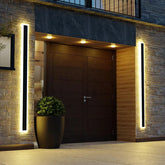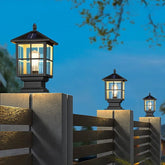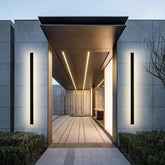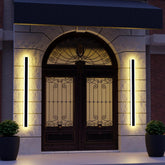Stylish Pendant Light Ideas for Every Room in Your Home
The Lasting Charm of Pendant Lighting
Among the many interior design elements that shape the personality of a home, lighting stands out as one of the most impactful. A pendant light is more than just a fixture; it is a statement piece that draws the eye and transforms the mood of a room. Unlike chandeliers, which often exude grandeur, pendant lights are versatile and adaptable, making them suitable for both minimalist apartments and luxurious residences.
The appeal of pendant lights lies in their ability to blend function with aesthetics. They illuminate a space while also serving as a decorative focal point. Whether suspended over a kitchen island, a dining table, or even in hallways, pendant lights create balance, highlight key areas, and add an element of sophistication.
A Brief History of Pendant Lighting
Pendant lights trace their origins to simple oil lamps and candle holders that were suspended from ceilings in ancient times. Over the centuries, these practical designs evolved into decorative lighting pieces crafted from glass, metal, and ceramics. The industrial revolution brought mass production and innovative designs, making pendant lighting accessible to households worldwide.
Today, pendant lights are available in countless styles—from rustic and vintage to ultra-modern designs. Their evolution mirrors the changing tastes of homeowners and interior designers, yet their core purpose remains the same: to provide focused, stylish illumination.
Why Choose a Pendant Light?
Functionality Meets Style
A pendant light offers directional lighting, making it ideal for spaces where focused illumination is needed. Over a kitchen island, pendant lights provide task lighting for cooking and dining. In living rooms, they can highlight seating areas or artwork. Unlike standard ceiling lights, pendants add depth and create visual zones within a room.
Versatility Across Interiors
Pendant lights work in virtually any setting. A single, sleek pendant can accentuate a minimalist office, while a cluster of glass pendants adds drama to a dining space. They can be installed as standalone pieces or grouped for added impact, giving homeowners and designers endless creative options.
Affordable Luxury
One of the greatest advantages of pendant lights is their accessibility. While chandeliers may be associated with luxury and high budgets, pendant lights offer stylish alternatives at a range of price points, making them suitable for both modest and premium homes.
Choosing the Right Pendant Light for Your Home
Considering Size and Scale
When selecting a pendant light, scale is crucial. A large pendant in a compact room can overpower the space, while a small one in a vast room may feel insignificant. Designers often recommend proportional guidelines—for example, ensuring the pendant’s diameter corresponds with the size of the furniture below it, such as a dining table or kitchen island.
Matching Style with Décor
The design of a pendant light should harmonize with the surrounding décor. Glass or crystal pendants bring elegance to formal dining rooms, while matte black or metal designs are perfect for industrial-style lofts. Wooden or woven pendants complement rustic and coastal interiors, offering warmth and texture.
Light Output and Ambience
The type of bulb and shade design affects how light is distributed. Transparent shades cast widespread illumination, while opaque or directional shades focus light downward, making them ideal for task lighting. Pairing pendant lights with dimmers enhances flexibility, allowing you to adjust brightness for different moods.
Best Placements for Pendant Lights
Over Kitchen Islands
One of the most popular applications, pendant lights above kitchen islands provide both task lighting and style. Hanging them at even intervals ensures balanced illumination across the countertop.
Dining Rooms
A pendant light centered above a dining table creates intimacy and focus. For rectangular tables, a series of pendants or a linear fixture ensures every seat enjoys proper lighting.
Living Rooms
While often overlooked, pendant lights in living rooms can define zones. For example, placing a pendant above a coffee table creates a cozy gathering spot while freeing walls for decorative art lighting.
Bedrooms
Suspending pendant lights beside the bed is a growing trend. These replace traditional bedside lamps, saving space on nightstands while offering direct light for reading.
Hallways and Entryways
Pendant lights in hallways and entryways make lasting impressions. A stylish pendant at the entrance immediately communicates the home’s character, while hallway pendants add rhythm and guide guests through the space.
Styles of Pendant Lights
Modern Minimalist
Clean lines, geometric shapes, and monochromatic finishes define modern pendant lights. These designs suit contemporary homes where simplicity and elegance take precedence.
Rustic and Industrial
Industrial pendant lights with exposed bulbs, raw metal finishes, and vintage Edison lamps bring rugged charm. Rustic pendants made of wood or woven fibers introduce natural textures.
Artistic and Statement Pieces
For those who view lighting as art, oversized or sculptural pendants serve as conversation starters. These designs are bold, expressive, and ideal for large spaces where they can shine as focal points.
Glass and Crystal
Glass pendants create light, airy atmospheres. Frosted or colored glass shades add subtle drama, while crystal pendants refract light, offering sparkle without the formality of chandeliers.
Installation Considerations
Height and Positioning
For dining tables and kitchen islands, pendant lights are generally hung 30–36 inches above the surface. This height balances visibility with functionality. For higher ceilings, adjustable cords and rods allow flexibility.
Grouping Pendants
Clusters of pendant lights create visual impact. Designers often recommend odd-number groupings for aesthetic balance, especially over rectangular dining tables or long kitchen counters.
Electrical Requirements
Installing pendant lights requires secure electrical connections, especially for heavier fixtures. While some homeowners attempt DIY installations, professional assistance ensures safety and proper alignment.
The Role of Pendant Lights in Interior Atmosphere
Pendant lights not only illuminate but also shape the ambience. Warm-toned bulbs create cozy, intimate spaces, while cool-toned lighting enhances focus and productivity. When paired with dimmers, a single pendant can transition seamlessly from task lighting to mood lighting, adapting to different activities and times of day.
Their ability to highlight architectural details, textures, and colors adds dimension to interiors. A well-placed pendant light can transform plain spaces into vibrant, layered environments.
Maintenance and Care
Maintaining pendant lights is relatively simple. Regular dusting prevents buildup on shades and bulbs, while glass or crystal pendants may require gentle cleaning solutions to restore clarity. LED-compatible pendants reduce maintenance further, thanks to long-lasting, energy-efficient bulbs.
With proper care, pendant lights can remain stunning centerpieces for years, combining durability with timeless design.
Why Every Home Needs a Pendant Light
The versatility, style, and functionality of pendant lights make them indispensable in modern interior design. They bring focus to key areas, enhance ambience, and act as stylish décor accents. More than just fixtures, they embody the perfect fusion of practicality and beauty.
Whether you’re redesigning a kitchen, refreshing a bedroom, or adding personality to an entryway, investing in a pendant light ensures your space shines—both literally and aesthetically.
FAQs
What height should pendant lights hang above a table?
Pendant lights typically hang 30–36 inches above a dining table or kitchen island. This ensures even lighting without obstructing views.
Can pendant lights be dimmed?
Yes. Most pendant lights are compatible with dimmers, allowing flexibility for different moods and tasks. Check bulb and fixture specifications before installation.
Are pendant lights suitable for small rooms?
Yes. Compact pendants are designed for smaller spaces like bedrooms, offices, or hallways, offering style without overwhelming the room.
How many pendant lights do I need over a kitchen island?
It depends on the size of the island. Generally, two pendants suit smaller islands, while three or more work for longer counters.
Do pendant lights save energy?
Yes, especially when fitted with LED bulbs. LED pendant lights consume less energy, last longer, and provide efficient lighting.









